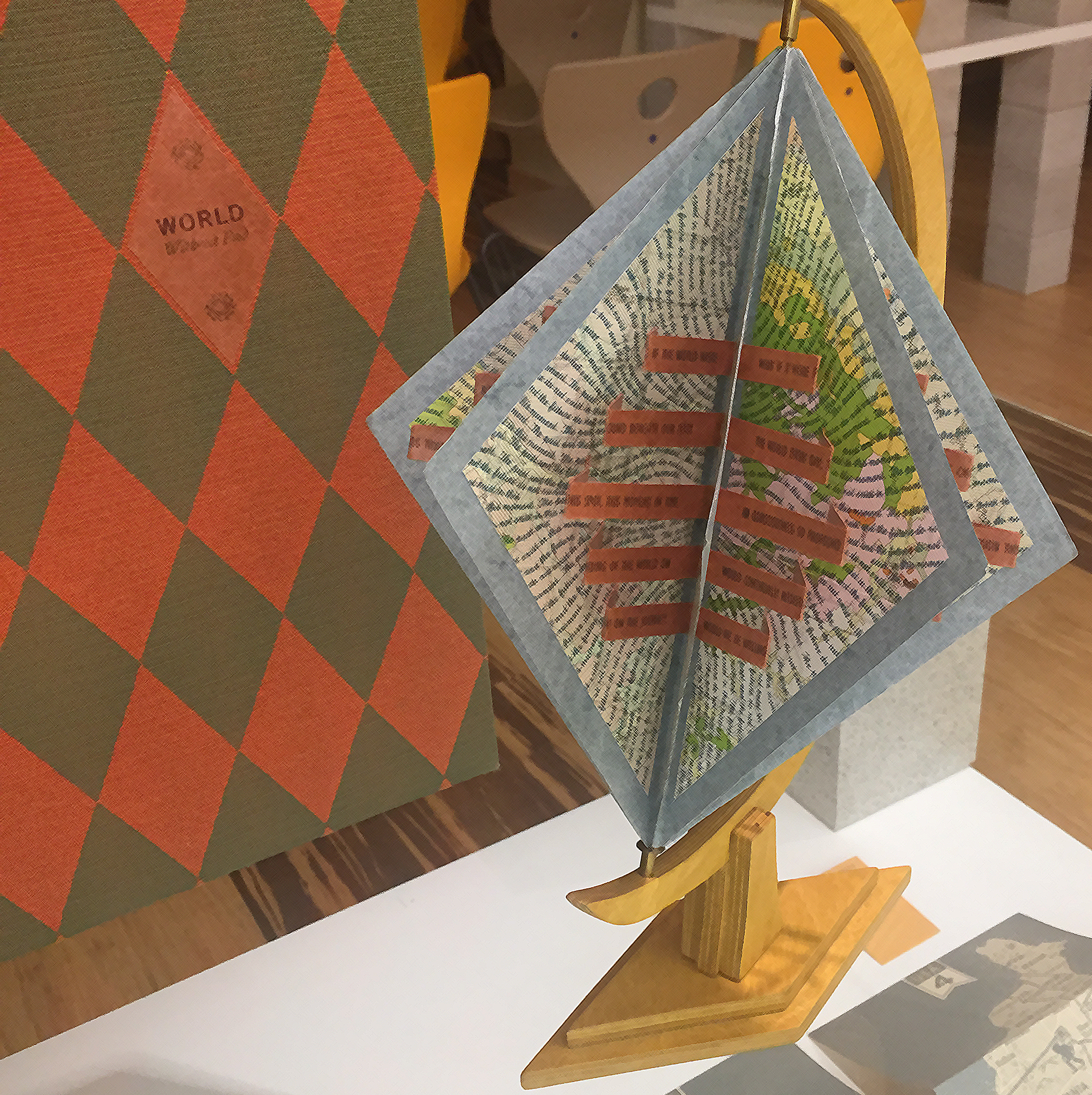Books as Aesthetic Objects


By Abigail Wendler Uhteg
2009
Here it is, a book. How many hundreds, thousands maybe, have we held, seen, read? In every book, of course, we can evaluate and appreciate the content; but in this book we are privileged: we can also see the actual labor of making the physical object: the book.
During her residency at the Women’s Studio Workshop in New York, the author/creator took ~3000 still photographs of the processes she used, and published the results in stop-action mode in a YouTube video.
You can see every step from the type-choice and plate-inking of letterpress printing to the tight hand-stitching of the headband, the compressing of the bound pages, the actual making of the flax and abaca paper for the cover. Here are the details of the rosin aquatints with etching and drypoint. Here is the physical activity that produces an artists book, aided by machinery but essentially the work of a woman’s hands.
And yet all this is ancillary, all of this is almost supplementary to the finished work I hold in my hands. I want to know not what the book is made of, but what it presents: a record not only of the artist’s hands, but more urgently her mind. For in addition to conceiving the form of the book, she has written the text, and she has created the illustrations. From the embedded clues, It turns out that she has also lived the story.
Printed in a block, surrounded by white space and faced with a faceless image, the text begins: This is a retrospective of future lovers, lined carefully against the wall to await nomenclature. We must press on from a sentence that toys with time sequence, that looks backwards and forwards in the same phrase, that silently speaks of the unvoiced unnamed, and presents a vision of love and blindfolded execution in a single image.
This is a complex of complexities that continues as the mind talking to itself, detailing both the ‘story’ and the progress of the story – it gets ahead of itself, it references its own leaves, it speaks of syntax, and yet it fulfills the promise of that first sentence: it is a love story. La lutte continue, the struggle continues, it exhorts, in the voice of the Free French slogan – this is surely the underground above-board story all lovers experience as they find their way through the that particular dark wood.
Sometimes the narrator is alone; sometimes The Other is present. Sometimes the accompanying illustration is small and enigmatic; sometimes it explodes into a double-truck of light surrounded or undergirded by heavy opacity. I admit to being baffled by the sequence and the imagery of the illustrations, except that they have the same uncertain rhythms and mysterious characterizations of the text that lies on every page in a justified box shape, its orderliness straining to contain the unruliness of the circumstances and the emotions.
The art of making this book is central not only because of its documentation in film but also because of the artist/author’s inclusion of typography and grammar as part of the subject matter. In between each word lie three more; she carves for him a letter out of music, boundaries drawn and hand-colored, and he slips her words into his pockets. One of the principals here has her eye trained on the page as well as on her heart.
This love story has in it all of the uncertainties, the humor, the sadness, the intimacy and the loneliness of the genre. There are concrete images and abstractions. With the narrator, we awake in a sleepless night. We huddle in a warm bed against the backdrop of a snowstorm. We welcome morning and dread it. The lovers advance and retreat. They meant so well but they’d been lost in translation and amidst miles of tangled telephone wire. There’s a judgment and a sorrow, a closeness and a distance, and in the end a conclusion Each made the other possible and necessary.
- Judith Klau